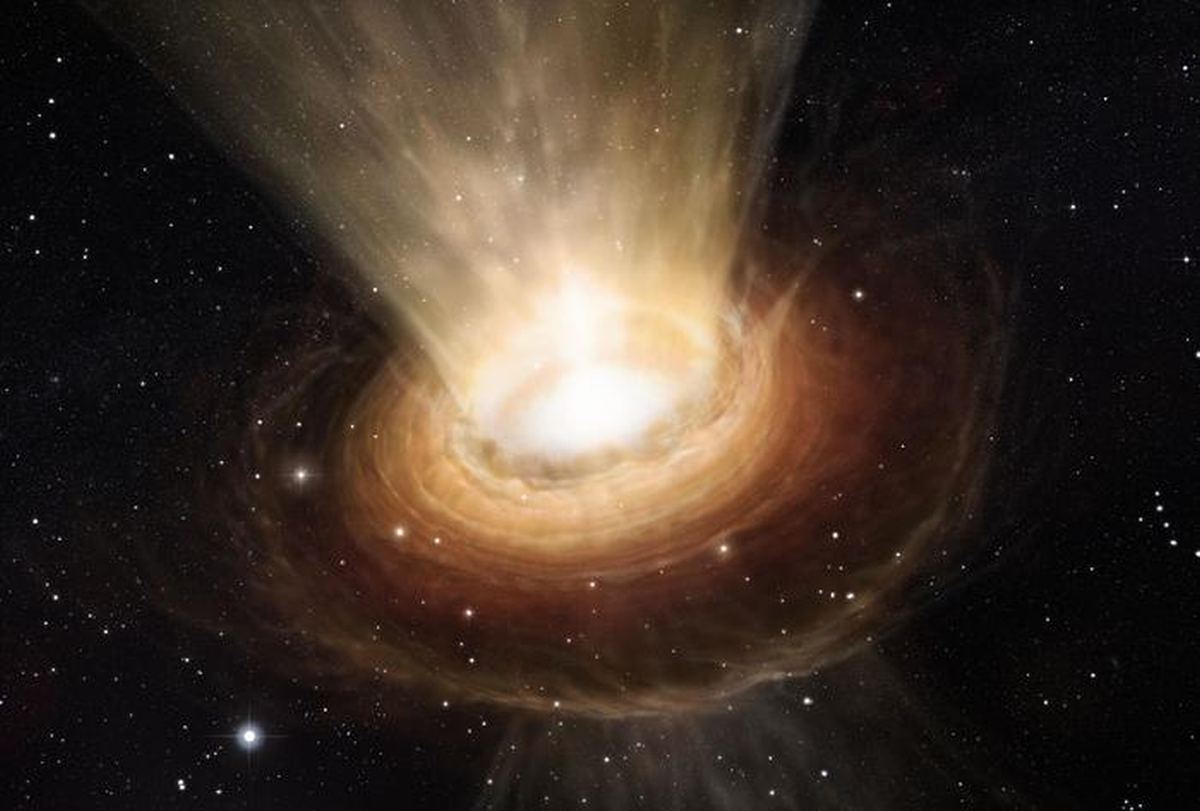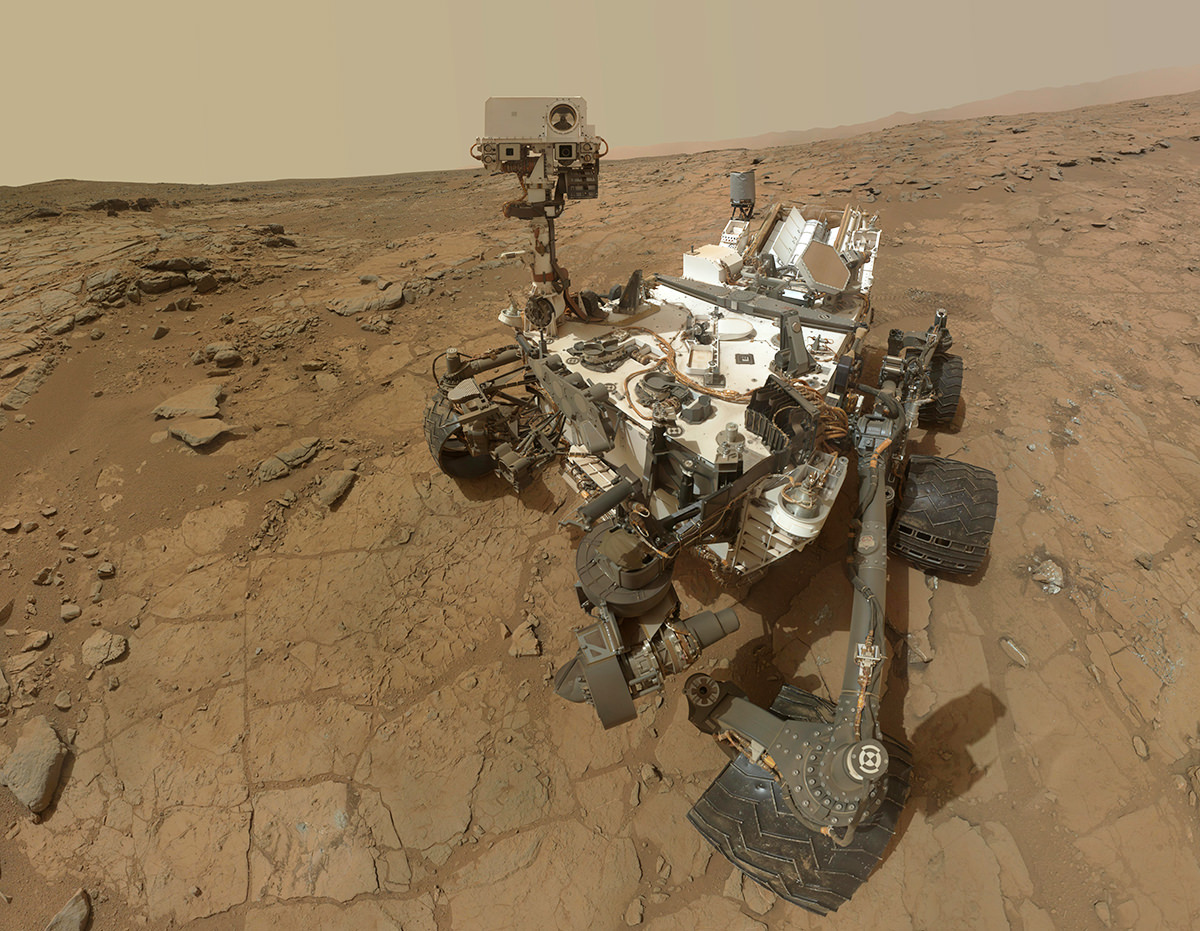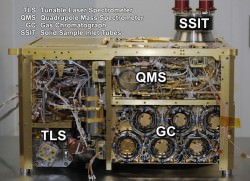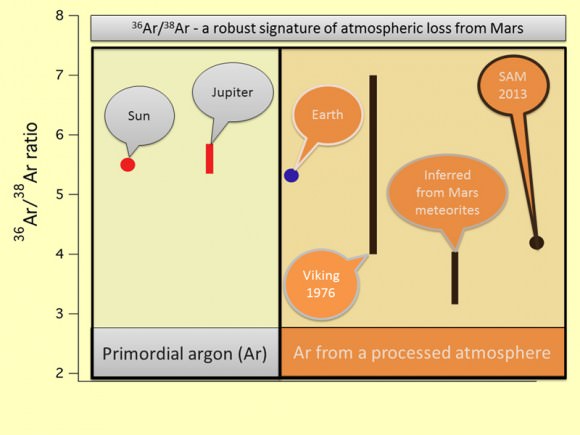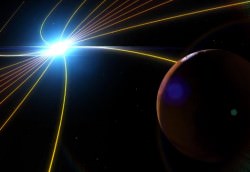There are only six of them: radon, helium, neon, krypton, xenon and the first molecules to be discovered in space – argon. They are all odorless, colorless, monatomic gases with very low chemical reactivity. So where did a team of astronomers using ESA’s Herschel Space Observatory make their rather unusual discovery? Try Messier 1… The “Crab” Nebula!
In a study led by Professor Mike Barlow (UCL Department of Physics & Astronomy), a UCL research team was taking measurements of cold gas and dust regions of this famous supernova remnant in infrared light when they stumbled upon the chemical signature of argon hydrogen ions. By observing in longer wavelengths of light than can be detected by the human eye, the scientists gave credence to current theories of how argon occurs naturally.
“We were doing a survey of the dust in several bright supernova remnants using Herschel, one of which was the Crab Nebula. Discovering argon hydride ions here was unexpected because you don’t expect an atom like argon, a noble gas, to form molecules, and you wouldn’t expect to find them in the harsh environment of a supernova remnant,” said Barlow.
When it comes to a star, they are hot and ignite the visible spectrum. Cold objects like nebular dust are better seen in infrared, but there’s only one problem – Earth’s atmosphere interferes with the detection of that end of the electromagnetic spectrum. Even though we can see nebulae in visible light, what shows is the product of hot, excited gases, not the cold and dusty regions. These invisible regions are the specialty of Herschel’s SPIRE instruments. They map the dust in far-infrared with their spectroscopic observations. In this instance, the researchers were somewhat astounded when they found some very unusual data which required time to fully understand.
“Looking at infrared spectra is useful as it gives us the signatures of molecules, in particular their rotational signatures,” Barlow said. “Where you have, for instance, two atoms joined together, they rotate around their shared center of mass. The speed at which they can spin comes out at very specific, quantized, frequencies, which we can detect in the form of infrared light with our telescope.”
According to the news release, elements can exist in varying forms known as isotopes. These have different numbers of neutrons in the atomic nuclei. When it comes to properties, isotopes can be somewhat alike to each other, but they have different masses. Because of this, the rotational speed is dependent on which isotopes are present in a molecule. “The light coming from certain regions of the Crab Nebula showed extremely strong and unexplained peaks in intensity around 618 gigahertz and 1235 GHz.” By comparing data of known properties of different molecules, the science team came to the conclusion the mystery emission was the product of spinning molecular ions of argon hydride. What’s more, it could be isolated. The only argon isotope which could spin like that was argon-36! It would appear the energy released from the central neutron star in the Crab Nebula ionized the argon, which then combined with hydrogen molecules to form the molecular ion ArH+.
Professor Bruce Swinyard (UCL Department of Physics & Astronomy and Rutherford Appleton Laboratory), a member of the team, added: “Our discovery was unexpected in another way — because normally when you find a new molecule in space, its signature is weak and you have to work hard to find it. In this case it just jumped out of our spectra.”
Is this instance of argon-36 in a supernova remnant natural? You bet. Even though the discovery was the first of its kind, it is doubtless not the last time it will be detected. Now astronomers can solidify their theories of how argon forms. Current predictions allow for argon-36 and no argon-40 to also be part of supernova structure. However, here on Earth, argon-40 is a dominant isotope, one which is created through the radioactive decay of potassium in rocks.
Noble gas research will continue to be a focus of scientists at UCL. As an amazing coincidence, argon, along with other noble gases, was discovered at UCL by William Ramsay at the end of the 19th century! I wonder what he would have thought had he known just how very far those discoveries would take us?
Original Story Source: University College London (UCL) Press Release

